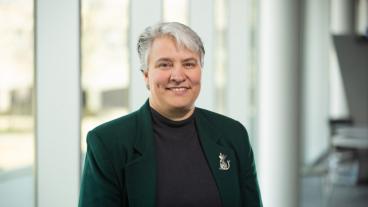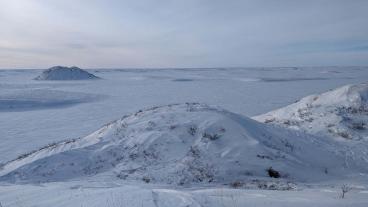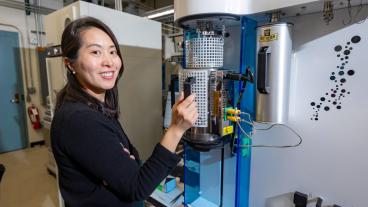Vienna, Austria -- April, 27, 2012 -- On the Mines campus, Tissa Illangasekare is known as the friendly, upbeat civil and environmental engineering professor who transformed the old Volk Gymnasium swimming pool into a state of the art soil and climate wind tunnel. It’s a snaking, wooden test facility where researchers study the transport of water from soil into the atmosphere and other important problems such as detection of buried land mines and leakage from sequestrated CO2.
But beyond campus — even across the world — Illangasekare is known for transforming the field of hydrology. That’s why in April 2012 he received the Henry Darcy Medal from the European Geosciences Union (EGU), one of the highest honors of the field. He accepted the Henry Darcy Medal at the EGU General Assembly in Vienna, Austria, where he delivered the lecture “Let us keep observing and play in sand boxes.”
“I consider it a tremendous honor and achievement to receive this medal named after Henry Darcy, the renowned 19th century scientist, groundwater hydrologist and civil engineer,” said Illangasekare. “This medal not only recognizes my contributions to the hydrological sciences and water resources engineering, which was only possible with the help of many of my outstanding students, colleagues and collaborators in the U.S. and around the world, but also the service to the hydrological community and society in general.”
Most hydrologists agree Illangasekare is the world’s leading expert in non-aqueous phase liquid (NAPL) and multiphase flow in porous media.
“Illangasekare is the best experimentalist in the area,” according to the EGU announcement. “He is a leading expert in the integration of innovative experimental work with sound theoretical research. His work has continuously improved fundamental understanding of behavior and fate of non-aqueous phase liquids in heterogeneous porous media. Illangasekare has made pioneering contributions to quantifying mass transfer from entrapped NAPL sources of contamination to groundwater.”
These contributions not only improved science, they also had a direct impact on the lives on many people. In the wake of the Asian tsunami in 2004, Illangasekare raised funds to clean up wells and set up emergency sanitation systems in the affected areas. He also directed a National Science Foundation-funded team of experts who traveled to Sri Lanka to identify groundwater supply problems and support the clean up of wells.
In his service at Mines, Illangasekare holds the AMAX Distinguished Chair of Civil and Environmental Engineering and is the founding director of the Center for Experimental Study of Subsurface Environmental Processes (CESEP).



